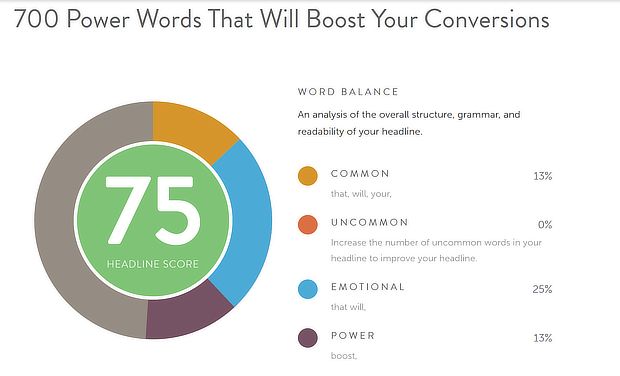
The healthcare industry is constantly evolving and adapting to current trends, and growth hacking has become an essential tool in this process. Growth hacking is a process of experimentation to find the most effective ways to grow a business and increase revenue in a short amount of time. In this article, we will explore 50 top growth hacking strategies that healthcare organizations can use to achieve their goals.
Understanding Growth Hacking in Healthcare
Defining Growth Hacking
Growth hacking is a term coined by Sean Ellis in 2010, which refers to the process of developing and executing experiments to rapidly grow a business. Growth hacking strategies are designed to be cost-effective and efficient, utilizing data analytics and user feedback to refine tactics and improve outcomes.
One of the key benefits of growth hacking is its ability to help businesses achieve exponential growth in a short period of time. By focusing on scalable and repeatable strategies, growth hacking can help healthcare organizations quickly acquire new patients and expand their reach.
The Importance of Growth Hacking in Healthcare
In today’s competitive healthcare landscape, growth hacking has become increasingly important in driving patient acquisition, engagement, and retention. With more patients relying on digital technologies to access healthcare services, healthcare organizations must stay abreast of these trends and use growth hacking to remain relevant and competitive.
For healthcare organizations, growth hacking can help improve patient outcomes and drive revenue growth. By leveraging data analytics and user feedback, healthcare organizations can identify areas for improvement and develop targeted strategies to address these issues.
Key Principles of Growth Hacking
Growth hacking is centered around rapid experimentations, data-driven decision making, and a relentless focus on customer acquisition and retention. Key principles of growth hacking include identifying and utilizing key performance indicators (KPIs), analyzing user feedback to refine tactics, and leveraging digital technologies to optimize processes.
Another key principle of growth hacking is the use of A/B testing to refine strategies and improve outcomes. By testing different variations of marketing messages, landing pages, and other elements, healthcare organizations can identify the most effective approaches and optimize their campaigns for maximum impact.
Ultimately, growth hacking is about finding innovative and efficient ways to grow a business. By applying these principles to healthcare, organizations can improve patient outcomes, drive revenue growth, and stay ahead of the competition.
Digital Marketing Strategies for Healthcare Growth
In today’s digital age, it is essential for healthcare organizations to have a strong online presence. By implementing effective digital marketing strategies, healthcare organizations can increase visibility, attract new patients, and grow their business. Here are some of the most effective digital marketing strategies for healthcare growth:
Search Engine Optimization (SEO)
Search engine optimization (SEO) is a crucial component of any digital marketing strategy. By optimizing a website to rank higher in search engine results pages (SERPs), healthcare organizations can increase visibility and drive traffic to their websites. This can translate to increased patient acquisition and engagement. To achieve this, healthcare organizations can conduct keyword research, implement on-page optimization techniques, build quality backlinks, and use other proven SEO strategies.
Content Marketing
Content marketing is another effective digital marketing strategy that healthcare organizations can use to attract and engage potential patients. By creating and sharing informative and relevant content, healthcare organizations can build authority and establish trust with their target audience. This can be achieved by sharing informative and educational content on topics such as health and wellness, disease prevention, and treatment options. By providing valuable content, healthcare organizations can position themselves as thought leaders in their field and attract new patients.

Social Media Marketing
Social media platforms such as Facebook, Instagram, Twitter, and LinkedIn can be powerful tools for healthcare organizations to reach and engage with a wider audience. Social media marketing involves creating and sharing content on social media platforms to increase brand awareness, drive traffic to websites, and promote services. Healthcare organizations can also use social media platforms to interact with patients, respond to inquiries, and address concerns. By leveraging social media marketing, healthcare organizations can build a loyal following and attract new patients.
Email Marketing
Email marketing is a highly effective tool that healthcare organizations can use to nurture relationships with current and potential patients. By sharing informative and educational content, promoting services and promotions, and communicating important information such as appointment reminders and healthcare news, healthcare organizations can stay top of mind with their target audience. Email marketing can also be used to drive traffic to websites and increase patient engagement.
Pay-Per-Click Advertising (PPC)
Pay-per-click (PPC) advertising is a digital advertising strategy that involves paying for digital advertising space on search engines and social media platforms. Healthcare organizations can use PPC advertising to increase brand visibility and drive traffic to their websites. This can be achieved by targeting specific keywords, demographics, and geographies to reach a relevant audience. By using PPC advertising, healthcare organizations can attract new patients and increase their online visibility.
In conclusion, by implementing these digital marketing strategies, healthcare organizations can increase their online visibility, attract new patients, and grow their business. By staying ahead of the curve and leveraging the latest digital marketing techniques, healthcare organizations can position themselves for long-term success in today’s competitive healthcare landscape.
Data-Driven Decision Making
Data-driven decision making is a process that involves using data to inform business decisions. It is a key component of growth hacking strategies, and healthcare organizations can utilize it to improve their online presence. By analyzing data, healthcare organizations can identify areas of improvement, track progress, and optimize their growth hacking strategies over time.
Utilizing Analytics Tools
Analytics tools such as Google Analytics can provide valuable insights into website traffic, user behavior, and other key metrics. Healthcare organizations can use these tools to track and measure the effectiveness of growth hacking strategies, identify areas of improvement, and refine tactics over time.
For example, by analyzing website traffic data, healthcare organizations can determine which pages are most popular and which pages have a high bounce rate. This information can be used to optimize website content and improve user experience.
Identifying Key Performance Indicators (KPIs)
Key performance indicators (KPIs) are measurable metrics that healthcare organizations can use to track progress and measure success. KPIs can include website traffic, lead generation, patient acquisition and retention, and revenue growth. By identifying and tracking KPIs, healthcare organizations can make data-driven decisions and optimize growth hacking strategies over time.
For example, by tracking lead generation KPIs, healthcare organizations can determine which channels are most effective at generating leads and allocate resources accordingly.
A/B Testing and Optimization
A/B testing involves creating two versions of a web page, email, or other digital asset and testing variations to determine which performs better. Healthcare organizations can use A/B testing to optimize website copy, headlines, images, and other elements to increase conversions and engagement.
For example, by A/B testing different versions of a landing page, healthcare organizations can determine which version has a higher conversion rate and use that version to drive more conversions.
In conclusion, data-driven decision making, utilizing analytics tools, identifying KPIs, and A/B testing are all important components of growth hacking strategies for healthcare organizations. By leveraging data and analytics, healthcare organizations can optimize their online presence and drive growth over time.
Patient-Centric Approaches
Personalization and Customization
Personalization and customization have become increasingly important in healthcare, as patients expect a personalized experience that meets their unique needs and preferences. Healthcare organizations can use personalization and customization through targeted content, messaging, and offers, which can increase engagement, trust, and loyalty.

Telemedicine and Remote Consultations
Telemedicine and remote consultations have become increasingly popular in recent years, as more patients turn to digital technologies to access healthcare services. Offering telemedicine and remote consultations can increase accessibility and convenience for patients, while also reducing costs for healthcare organizations.
Online Appointment Scheduling
Online appointment scheduling can increase convenience for patients and improve appointment management for healthcare organizations. With online appointment scheduling, patients can easily schedule, reschedule, and cancel appointments, while healthcare organizations can reduce no-shows and optimize scheduling processes.
Patient Feedback and Reviews
Patient feedback and reviews can provide valuable insights into the patient experience and identify areas for improvement. Healthcare organizations can use patient feedback and reviews to optimize processes, improve patient satisfaction, and drive patient acquisition and retention.
In conclusion, growth hacking is an essential tool for healthcare organizations to achieve their goals and remain competitive in today’s digital age. By employing these 50 top growth hacking strategies, healthcare organizations can increase patient acquisition, engagement, and retention, while also improving efficiency and reducing costs.
